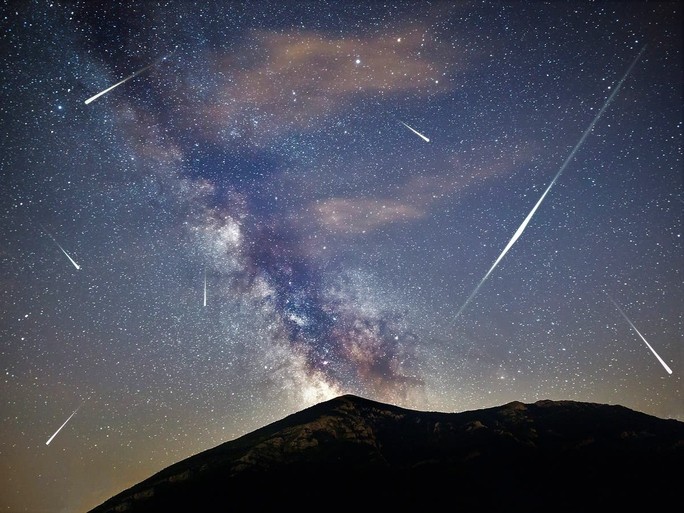9 Must-see Stargazing Events of 2022
Quadrantid meteor shower: January 3/4, 2022
For viewers in the Northern Hemisphere, the first major meteor shower of 2022, the Quadrantids, peaks on the night of January 3 and in the early morning hours of January 4. The thin, crescent moon will set early in the evening, leaving ideal dark skies during the peak hours between midnight and dawn. This New Year’s shower is known to produce brighter-than-average shooting stars, with 25 to 100 visible meteors per hour depending on local light pollution.
According to National Geography, the Quadrantids get their name from the former constellation Quadrans Muralis, and the burning space rocks appear to radiate from the northeast sky just off the handle of the Big Dipper. Like all meteor showers, the best way to see as many shooting stars as possible is to find a viewing location away from city lights and wait for about 20 minutes to let your eyes fully adjust to the late-night or predawn darkness.
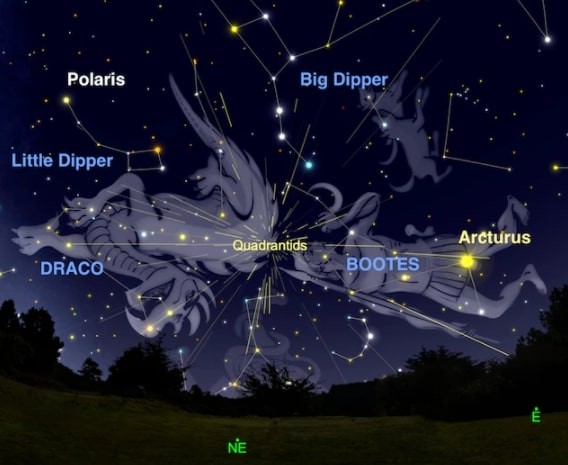 |
| Illustration: National Geographic |
Venus and Jupiter’s celestial ‘kiss’: May 1, 2022
Most years a couple of planets get close to each other—or, rather, appear to be from our celestial vantage point—and this year it’s the turn of Venus and Jupiter. They’ll be separated by just 14 arcminutes (0°14’) at the start of May 2022, though it will be a pre-dawn sight, as reported by Forbes.
Eta Aquarids meteor shower: May 6/7, 2022
There will be so few meteor showers on moonless nights in 2022 that it will be worth trying to get eyes-on with the 30 meteors per hour predicted during the peak of 2022’s Eta Aquarids meteor shower. They’re leftovers from Halley’s Comet.
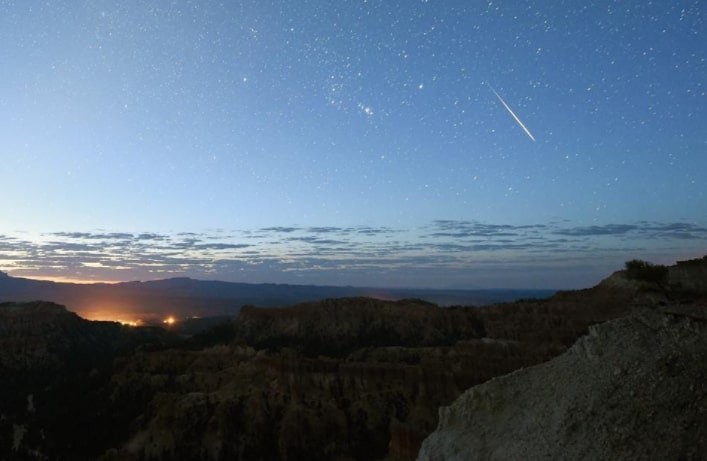 |
| A Perseid meteor streaks across the sky in Utah. Photo: Getty Images |
A ‘Blood Flower Moon’ Eclipse: May 16, 2022
The first of two total lunar eclipses of 2022 will occur on May 15 or 16, depending on where you are. Lunar eclipses occur when the sun, Earth, and moon align such that the moon crosses through Earth’s shadow, darkening and reddening its silvery disk in our skies. This particular lunar eclipse will be visible from North and South America, Europe, Africa, and parts of Asia.
While parts of the lunar eclipse will occur after the moon has set for viewers in Africa and Europe, sky-watchers across the eastern half of North America and all of Central and South America will get to see the entire eclipse from beginning to end. Starting at 9:32 p.m. ET on May 15, the eclipse will reach its maximum phase—when the moon turns its deepest and most dramatic red—at 12:11 a.m. ET on May 16.
Since the full moon of May is known as the Flower Moon, named for the blooming flowers this time of year in the Northern Hemisphere, this celestial event has been dubbed the Flower Moon Eclipse.
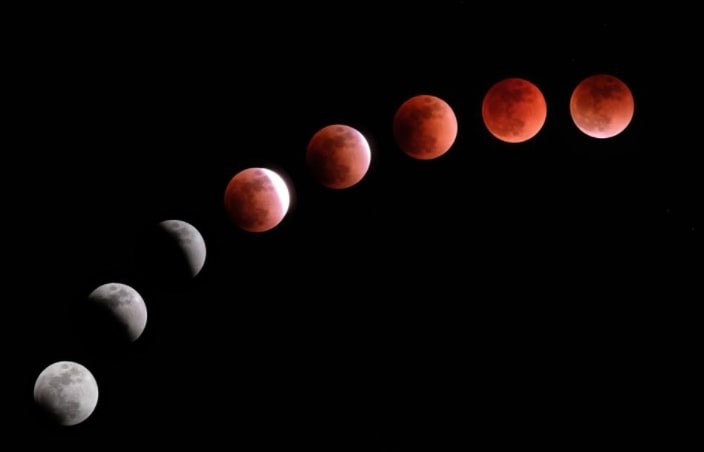 |
| This composite image created on January 31, 2018 shows the moon during a lunar eclipse referred to as the "super blue blood moon" in Tokyo. Photo: Getty Images. |
The biggest full Moon of the year: June 14, 2022
The Moon orbits Earth in an ellipse, so some full Moonsare closer than others. The closest, and therefore the apparent biggest, comes on June 14, 2022. June’s “Strawberry Supermoon” will be best seen at moonrise in the eastern sky.
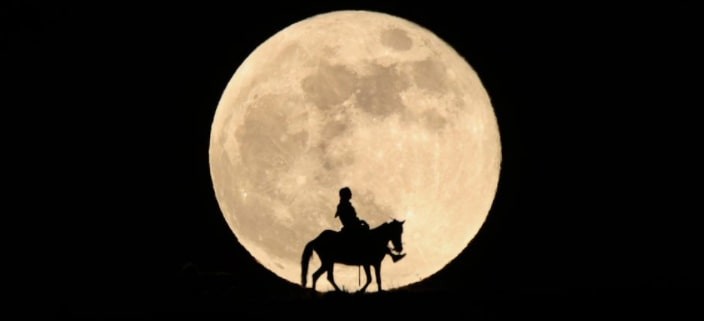 |
| Photo: Getty Images |
Five (possibly six) planets align: June 18 to 27
Sky-watchers who set their alarm clocks early in June will be able to catch a rare lineup of all the major planets visible to the naked eye: Mercury, Venus, Mars, Jupiter, Saturn, and possibly Uranus—though seeing the final planet requires pristine sky conditions. To cap it off, the moon will pass near each of these worlds between June 18 and June 27.
On June 24 and 25 the crescent moon will glide past the ice giant Uranus and make it easier to hunt down, especially using binoculars. Look for a distinctly green-colored dot. And eager stargazers won’t want to miss the moon’s close encounter with super-bright Venus on June 26. Then on June 27 the elusively faint Mercury gets its turn with the moon, when both will appear embedded in the morning twilight.
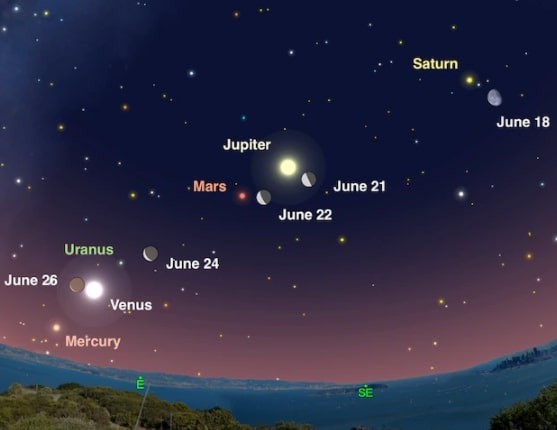 |
| Illustration: National Geographic |
Perseid meteor shower peaks: August 12
More of a low-light than a highlight; the annual summer performance of the Perseid meteor shower will be severely hindered by the light of a full moon, as reported by Space.
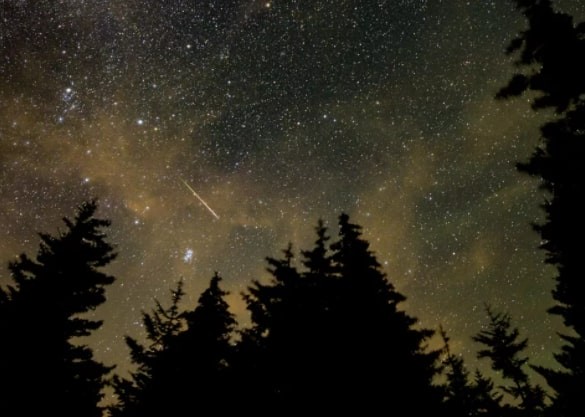 |
| Photo: Space |
Partial solar eclipse: October 25
On October 25 the moon will take a bite out of the sun when a partial solar eclipse graces the skies over most of Europe and the Middle East, as well as parts of western Asia, northern Africa, and Greenland. Similar to the partial eclipse on April 30, this October event will occur when the moon partially blocks the solar disk as seen from Earth. As much as 86 percent of the sun will be covered for viewers in parts of Eurasia.
The moon’s silhouette will begin to block part of the sun at 8:58 UT, and the maximum eclipse will occur at 11:00 UT. People in North and South America will be out of luck for this one, as the partial solar eclipse will occur during nighttime in the Americas. The next solar eclipse for sky-watchers west of the Atlantic won’t happen until October 14, 2023, when an annular eclipse, or “ring of fire,” will be visible.
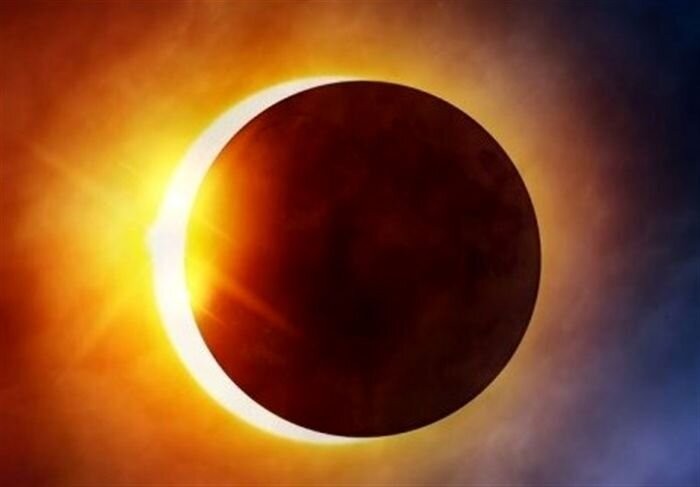 |
| A solar eclipse will occur on the first day of summer (June 21), but the moon is too far away to fully block the sun.Photo: Terah Times |
November 7 and 8: Total lunar eclipse
People across North and South America, Australia, Asia, and parts of Europe will have the opportunity to watch the moon blush red for the second time in 2022 when a total lunar eclipse occurs during the overnight hours of November 7 and 8. In the western United States and Canada, eastern Russia, New Zealand, and parts of eastern Australia, sky-watchers will get to see the entire eclipse unfold. Meanwhile, eastern North America and most of South America will be able to view partial phases of the eclipse as the moon sets in the west.
The moon will begin to darken along its edge on November 8 at 3:03 a.m. PT, and then its entire disk will plunge into the deepest central portion of Earth’s shadow at 2:59 a.m. PT. The eclipse will end at 3:41 am PT, rounding out another wonderful year of stargazing.
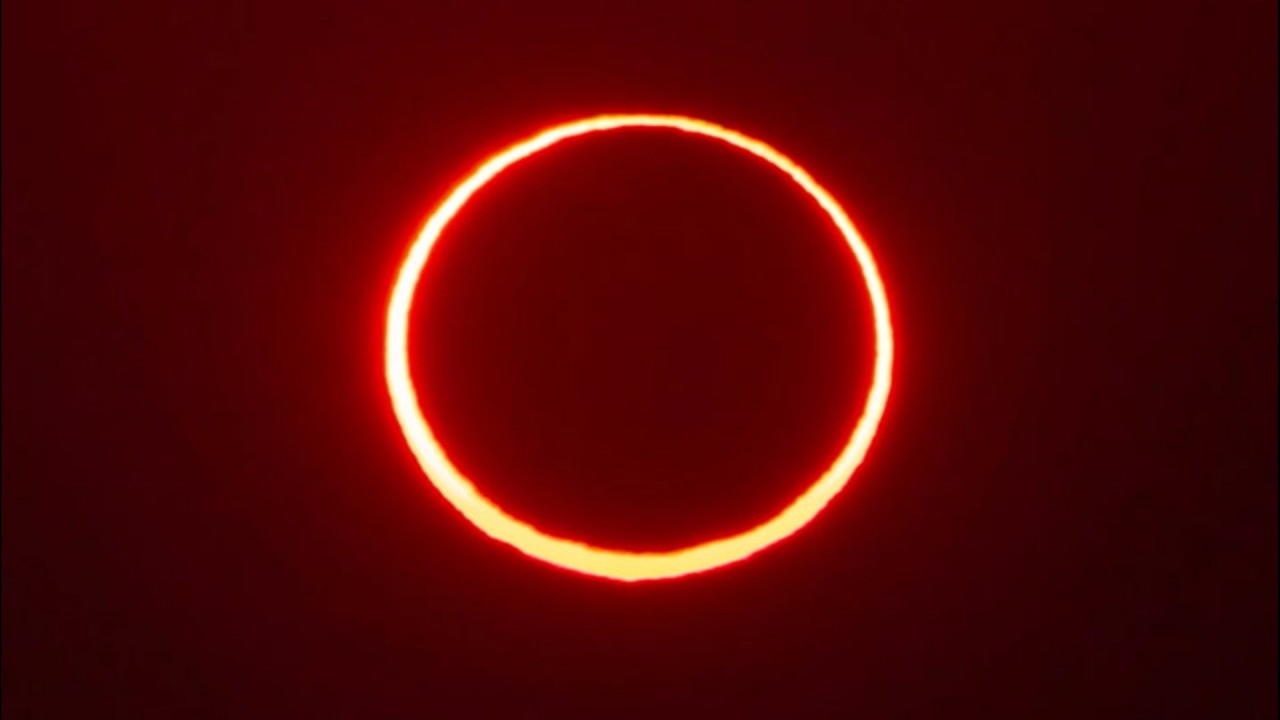 |
| Photo: 9News |
 | Top 8 Biggest Sport Events To Celebrate In 2022 World Cup, Winter Olympics, Rugby Union, etc, are some of the biggest sport events that you should be looking for in 2022. |
 | The Best Movies To Watch For A 2022 New Year Nothing is greater than starting a new year with an awesome movie with your loved ones and family, from romantic to thriller and comedy. |
 | 9 Best US – UK Songs Of 2021 From Driver License to All Too Well, here are the best US - UK songs of 2021 that hit their tops on Billboard, and gained ... |
Recommended
 Handbook
Handbook
Vietnam Moves Up 8 Places In World Happiness Index
 Handbook
Handbook
Travelling Vietnam Through French Artist's Children Book
 Multimedia
Multimedia
Vietnamese Turmeric Fish among Best Asian Dishes: TasteAtlas
 Handbook
Handbook
From Lost to Found: German Tourist Thanks Vietnamese Police for Returning His Bag
 Handbook
Handbook
Prediction and Resolution for the Disasters of Humanity
 Handbook
Handbook
16 French Films To Be Shown For Free During Tet Holiday In Vietnam
 Handbook
Handbook
Unique Cultural and Religious Activities to Welcome Year of the Snake
 Handbook
Handbook

